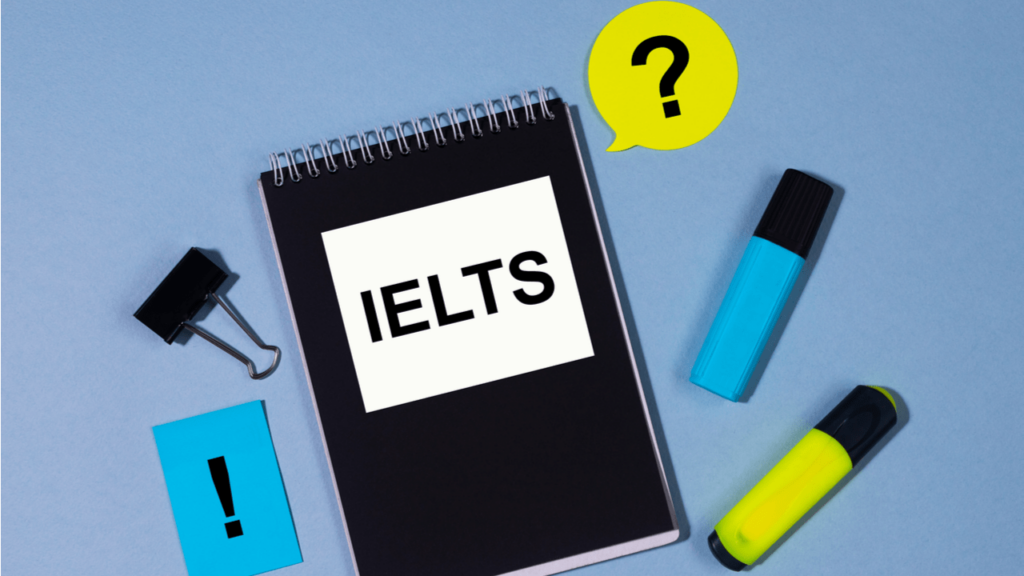The International English Language Testing System is a proficiency test that candidates must appear for if they aim to migrate for employment or pursue higher education abroad. It is accepted by 11,000 organisations worldwide and assesses four essential skills: reading, writing, speaking and listening. It has two test formats which are: IELTS computer-based practice test and paper-based.
Table of Contents
Candidates can choose the type of test they wish to appear for after filling out the registration form and making a payment. Out of the four, candidates generally find the listening section of the computer-based IELTS most challenging due to the time constraint. For an easier understanding of the candidates, we have underlined a detailed overview of IELTS listening computer based practice the types of questions with tips, tricks and more.

Overview & Advantages of Computer-based IELTS Test
The total time allotted for computer-based listening IELTS is 30-34 minutes. Each question is of 1 mark. In each section, candidates must-hear recordings and then accordingly answer a series of questions. There are no changes in marking or the types of questions that appear in the exam.However, the test should generally be opted by candidates who can type fast, have more proficiency in computer applications and are used to it rather than manual writing. Thereafter, they can register for the IELTS computer-based practice test. Its other benefits are:
- The screens are big so it’s easy to read the questions
- Candidates get their results within 5 working days
- Slots are available and can be booked at per convenience
The only difference is that candidates do not have to transfer their answers from the booklet and answer all the questions that come on the screen in a computer-delivered IELTS.
Structure of the IELTS Listening Section
The format for both the computer-based listening IELTS and the paper-based test is the same. The time allotted is 30 minutes and the candidates are required to solve 40 questions in total. The questions are based on successive recordings and their order is given below.

Excel in IELTS with India’s Top Online Coaching
Leap has helped more than 1 Lakh students achieve 7+ IELTS band.
Recording 1
It’s a conversation between two people, for instance, talking about opening a bank account.

Excel in IELTS with India’s Top Online Coaching
Leap has helped more than 1 Lakh students achieve 7+ IELTS band.
Recording 2
It’s a monologue on a specific subject, for example on museums or local amenities.
Explore all countries
Recording 3
This is a conversation between four people. For instance, it can be a discussion about an assignment between university students and a tutor.
Recording 4
It’s a monologue in an academic environment, for example, a speaker talking about any academic subject. For both general and academic categories, the listening type remains the same.
Types of Questions Asked
There are 11 types of questions in the listening section of the computer-based IELTS and they range from:
1. Multiple choice
In this question type, there are usually three possible answers. The test-takers need to either choose A, B or C in the given time.
2. Matching
Candidates, in this task, are required to match a numbered list from the options provided in the question paper. This task in the IELTS computer-based test assesses their ability to recognise relationships and form connections between the facts.
3. Plan, Map, Diagram labelling
Test-takers are required to complete labels of a map (e.g. part of town) and plan (building or a factory) in the IELTS computer-based practice test. Candidates are required to select the correct answer. This tests the candidate’s ability to understand the description of a place and relate to it visually.
4. Form Completion
Candidates are required to fill in the gaps in the outline given. Either one is required to select the answers from the options given or fill in the missing words. The IELTS computer-based practice test will help get a detailed understanding of the task.
5. Note Completion
This task in IELTS computer-based test requires an understanding of how different items relate to one another and asks for a summarisation of the type of information given.
6. Table
Candidates must fill in the gaps in the table which are related to categories such as time, place and price.
7. Flow-chart
Candidates are required to summarise processes by following arrows. This tests their ability to follow complex directions and the flow of argument.
8. Summary
This task demands that candidates provide a summary of the given passage. It is used to check candidates’ range of vocabulary and command over language and comprehension.
9. Sentence completion
Candidates must first read a set of questions and then complete the task after using information from the recording. A stipulated word limit is given such as ‘No more than two words’ or ‘No more than three words.
10. Short answer
Test-takers must list two or three points. Here, hyphenated words are considered as one word.
Accessing Listening Practice Tests
In order to prepare for the test, candidates are encouraged to take multiple practice tests which are available on the official IELTS website. To access the IELTS computer-based practice test, candidates must:
Step 1: Navigate to the website of IELTS.
Step 2: Click on the tab, ‘Start computer-delivered listening practice test’.
Step 3: Then, candidates must confirm their name, date of birth and candidate number.
Step 4: They must click the ‘play sound’ tab on their screen to begin a computer-based IELTS listening mock test.
Tips Candidates can Follow for IELTS Listening Computer-based practice
Nailing computer-based IELTS listening is possible when candidates know the exam pattern, types of questions that appear and the scoring pattern. However, that is not all. Candidates must follow these tips diligently since the audio will be played only once.
1. Grammar
Candidates must try to achieve proper sentence construction, use correct tenses, singular nouns and verbs.
2. Spelling
Incorrect spelling will end up getting a negative marking. Hence, students must be very careful while writing answers.
3. Highlighting
While listening, candidates can highlight any word they feel requires emphasis. All they are required to do is right-click and select the word.
4. Read English texts
Candidates must read a wide variety of English texts. Whether it’s non-fiction, fiction books, or magazines, these all must be read. If any meaning isn’t understood, then test-takers must circle it and refer to the dictionary.
5. Listen to audio & watch videos
To widen their vocabulary, candidates can listen to English audios such as BBC, Al Jazeera, Ted Talks, Podcasts, Youtube videos, etc.,
6. Implement strategies
Candidates must understand that the two skills they must hone are paraphrasing and summarising. It is applicable for all the sections and will help in achieving a high score.
7. Look out for keywords
They can try to predict the answer that will fit by hearing the keywords. This can be predicted by understanding the type of word that will be applicable such as verb, noun or adjective.
8. Synonyms
Looking out for synonyms is a must. For instance, in a recording, one might hear ‘day you arrive’ which will translate into ‘arrival date’.
9. Numbers or different accent
Many times, in conversations, zero may be pronounced as ‘oh’. They can also club them by saying ‘double oh or triple oh’. Hence, it is essential to understand that the accent may differ and must look out for them ardently. This can be done through the IELTS computer-based practice test.
10. Vocabulary
Before appearing for the exam, candidates should be well-versed with the vocabulary and phrases that come in the listeningsection of computer-based IELTS. We have curated some of the most common phrases that are used in the test:
- On the left-right far side
- At the top-bottom
- North-South East-West
- To the north South
- Slightly west of
- In the southeast in the northeast
- In the middle of the centre
- Above below
- Inside outside
- Opposite front of
- Left-hand side right-hand side
- Clockwiseanticlockwise
- A little beyond
- Just past
- Before you get to
- Enter via
- Adjoining
- Runs alongside

Conclusion
Candidates must follow the comprehensive guide and follow the sample papers to score well in the listening section of the computer-based IELTS. They must implement the strategies mentioned above to score well in this section. They can do so with the IELTS listening Computer-Based practice test. The task does not end with a good IELTS score and securing admission to a top university comes with a lot of hurdles, the primary one being financing. However, Leap Finance has the perfect solution. We provide easy and affordable educational loans to support your journey abroad. Since its inception, we have funded more than 3000 students.
Frequently Asked Questions
1. What does the listening test consist of?
Ans. There are four parts to the listening section, and each will be allotted a specific time. After 30 minutes, candidates will be given an additional 10 minutes to transfer their answers.
2. How can I practice IELTS listening?
Ans. Candidates can practice IELTS listening test by listening to previous audios and by completing sample papers.
3. How can I get 8.5 in listening?
Ans. It is possible to get 8.5 in listening. However, in order to do so, candidates must get 36 questions correct.














Have Questions? Get Guidance to reach your Dream University
Connect with India's finest counsellors and biggest study abroad community.
Get Guidance